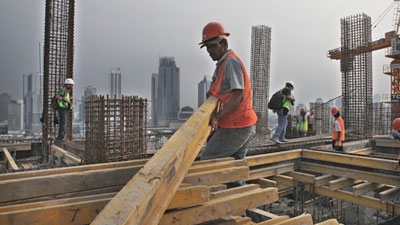- Over the next decade, Indonesia has several factors which good policies can turn into powerful drivers of growth: demographics which will provide abundant labor; the urbanization trend; and developments in China.
- Indonesia faces a risk of slowdown in long-term growth, as recent growth was partially driven by a very favorable external environment: the commodity boom of 2003-2011 combined with low global interest rates since 2009.
- To avoid risks associated with higher unemployment, growth above 5 percent is vital. Economic growth considerably higher than 5 percent is required, for Indonesia to escape the threat of a middle income trap. Growth of 9 percent would position Indonesia to become a high-income economy by the year 2030.
- Growth has not been inclusive. Between 1999 to 2012, the poverty rate was cut by half, from 24 percent to 12 percent. But 65 million people still live between the national poverty line of $1.25 a day and the global poverty line of around $2 a day.
- Boosting economic growth through increasing labor productivity is very important, as it will bring higher value-addition to the labor force, reduce workers’ vulnerability to job losses, and enhance private sector competitiveness. More jobs should be created in the manufacturing sector and high-end services.
- Governments can increase infrastructure investments by improving the quality of budget spending. Phasing out the large fuel subsidy spending frees funds to to finance greater infrastructure investments. Sub-national governments can spend more on infrastructure by reallocating funds from inefficient uses.
- Closing Indonesia’s skills gap will require improving education quality at all levels, as well as expanding and improving of training centers. Graduates and workers should be equipped with the right technical skills and also employer-valued behavioral skills (discipline, reliability, teamwork and leadership).
- Enhancing productivity growth through structural change or within sectors in Indonesia requires improving the functioning of product, labor, capital and land markets. A consistent industrial strategy is needed, elaborated in partnership with the private sector.
- The poor, the vulnerable and some in the middle-class require better access to key services. Improving service delivery requires strengthening accountability through both demand-side and supply-side measures.
- Indonesia’s social security system is being built.This reform will have significant impact on the national budget, the labor market, and the macro economy. That and the large number of stakeholders with diverging interests will require strong leadership of these reforms. Strengthening existing social assistance programs is the other essential component of a comprehensive social protection framework.
- Indonesia should continue to enhance the management of disaster risks and further improve community resilience to natural disasters. Indonesian cities are particularly vulnerable to natural disasters, due to rapid construction in urban areas and weak enforcement of building codes and zoning regulations.



